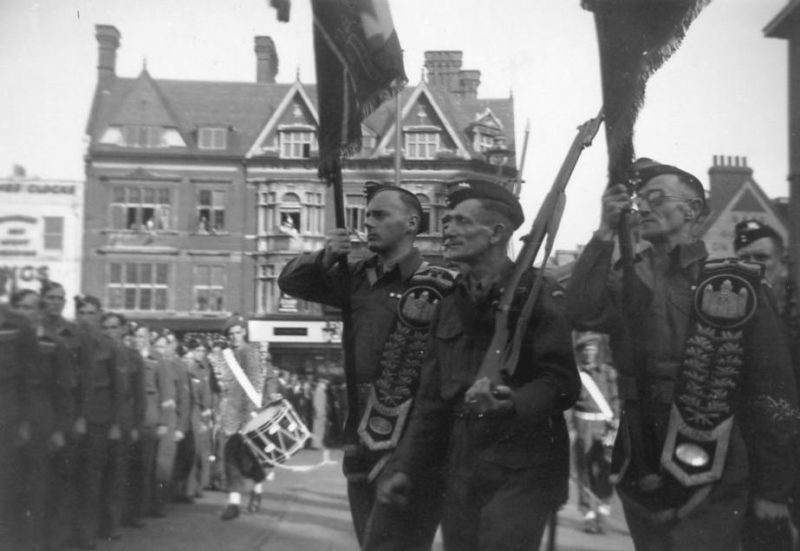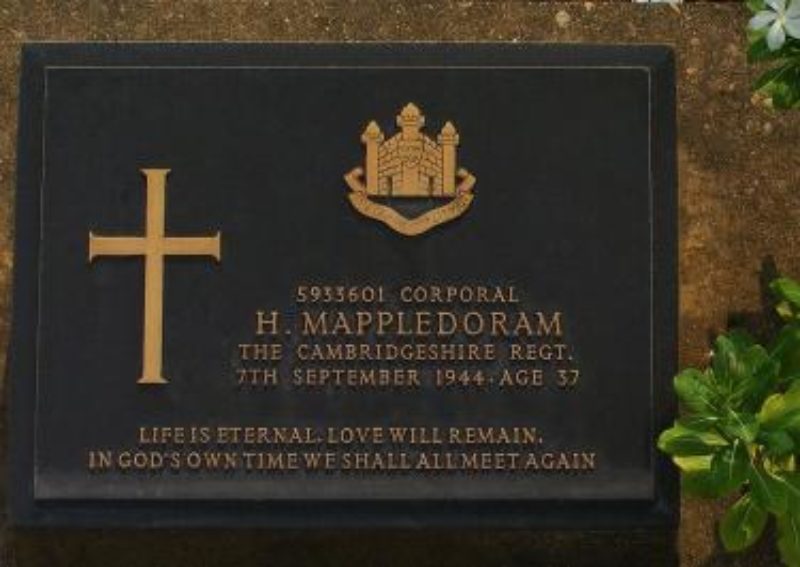Cambridge Labour Party Cambridge Labour Party

People new or recent to Cambridge and Cambridgeshire can learn a whole lot about their adopted home from people who were born here. One of the biggest lessons I learnt early on was how vitally important to many local families the anniversary of the ending of World War Two was.
It was shortly after I first arrived in 1990 to be the County Council’s first Recycling Officer. Our family was in a remote part of Thailand after visiting grandparents in New Zealand. I was walking in the heat through Kanchanaburi war cemetery, near the banks of the River Kwai Noi, the final resting place of 6982 Allied Far East prisoners of war (FEPOWs), the majority British.vAs I walked down the row of graves I saw again and again, well over a hundred times, the words Cambridgeshire Regiment on the memorials. I stopped for a while at one in particular.
Corporal Herbert Mappledoram of the Cambridgeshire Regiment died 7th September 1944. You don’t get many Mappledorams to the pound I thought, and I shared an office with one at Shire Hall. When I asked her a fortnight later, yes she knew about Herbert. He was the much-loved uncle she had never seen or met. There are hundreds of families in Cambridgeshire today who never had the chance to meet their uncle or now great uncle Herbert.
Herbert was 37 when he died, married to Violet and father of June, and had lived in Newmarket before signing up. He was working that day as a lorry driver partly because he was a lorry driver in Civvy Street. Sadly for him and his family, allied bomber planes had been sent to where he was at Non Pladuck on one of many missions to try to put the infamous “Burma Siam railway” out of action. Their job was to undo the project that had cost so many British, Australian, Dutch and local lives. Like too many in wartime, he died a victim of his own side’s ammunition.
Until that fateful day, Herbert had been a survivor. He had seen dozens of his friends in the Regiment die from starvation, over work and disease all the way through 1943 as brutally exploited slave labourers, people the Japanese Army judged to be worthless. They were building by hand, sweat and toil railway through a jungle covered mountain range, to supply the Japanese Army in Burma and send their troops back and forth too. A railway the British colonisers had considered too expensive in lives to construct. A railway that claimed the lives of a one prisoner or local forced labourer (“Romusha in Japanese) for every railway sleeper that was laid, well over 80,000 deaths. And the history of it was far deadlier and harsher than the fantasy film story “Bridge Over the River Kwai”.
Two whole Battalions of the Cambridgeshire Regiment were rushed into Singapore in January 1942, along with thousands of others across East Anglia. They arrived by ship sent thoughtlessly by the British Army a little over a month before the supposedly impregnable British Far East base fell to the invading Japanese Army mid-February, resulting in over 140,000 Allied prisoners and many dead in its defence too.
Next weekend is the anniversary of VJ Day and on Friday we will hold a short socially distanced tribute outside the front of the Guildhall at 5pm, 75 years after the Japanese surrender. We will pay tribute, with relatives, to all who served locally from Cambridge and Cambridgeshire in the Far East. It’ll be hosted by the Mayor of Cambridge, Councillor Russ McPherson and I will contribute too.
We will also pay particular tribute to members of the Cambridgeshire Regiment and the wider British services who were Far East Prisoners of War (FEPOWs), including 500 from the Regiment who died while in slavery. We’ll remember others who survived appalling treatment by the Japanese Army, and also the hundreds of local servicemen in Cambridge and the wider county who didn’t make it back fighting to defeat the Japanese around Singapore and later in the vital victory the Allies won in Burma.
When you are next in Cambridge Guildhall, look to your left in the entrance and see the Roll of Honour to all who died in the two World Wars. And look to your right in the lobby near the stairs and see the bronze plaque Cambridge City Council installed five years ago to remember all from Cambridge and Cambridgeshire who served so valiantly in the Far East.
Councillor Lewis Herbert, Leader of Cambridge City Council

